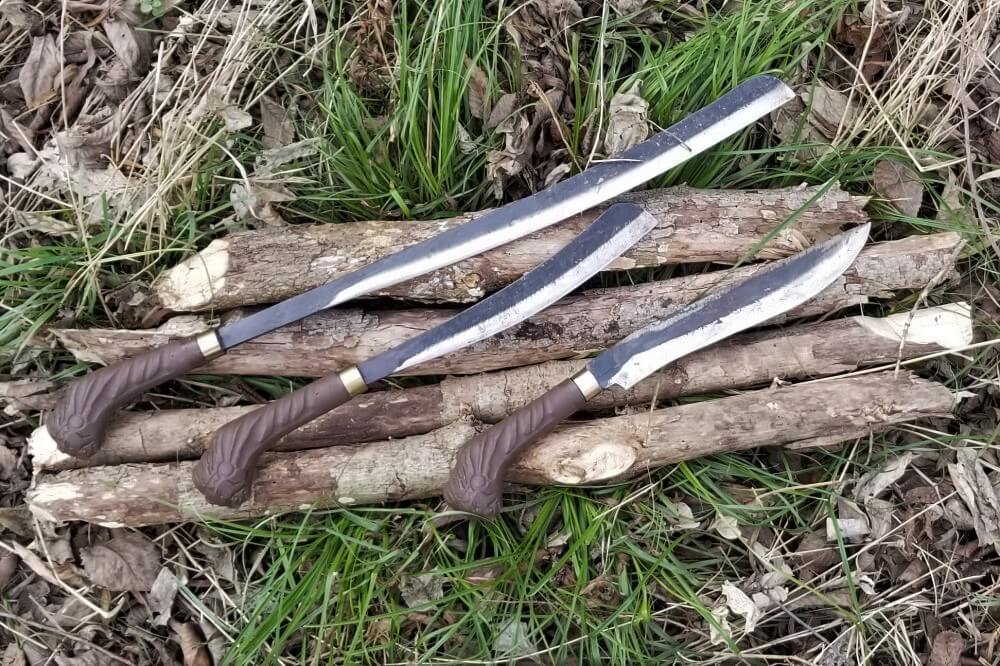Blade enthusiasts and users across cultures are familiar with a unique and functional feature found on various blades: the handle swell. This design element, often seen as a bulge or flare at the end of the handle, has a rich history and serves as a testament to the thoughtful craftsmanship behind these tools. In this blog post, we'll explore why and how this handle shape is useful, along with the types of blades that feature it.
The Practical Brilliance of Handle Swells
At first glance, the handle swell might seem like a simple design detail. However, its impact on the functionality of a blade is anything but ordinary. Here's why it matters:
- Enhanced Grip: The primary purpose of a handle swell is to provide an improved grip. This is especially crucial during tasks that involve forceful swings, cuts, or impacts. The swell acts as a natural stopping point for your hand, preventing slippage and offering greater control over the blade.
- Safety: Handle swells function as handguards, protecting users from accidentally sliding their hand onto the blade. This safeguard is particularly important when executing vigorous cutting motions, reducing the risk of self-inflicted injuries.
- Versatility: The handle swell accommodates various grip positions along the handle, making the blade versatile for different cutting angles and techniques. Whether you're making precise cuts or powerful chops, the swell caters to your hand positioning needs.
- Ergonomics: The ergonomic benefits of a handle swell can't be overstated. The design provides a comfortable fit in the palm, reducing hand fatigue during extended use. This is especially appreciated when tackling demanding tasks.
Blades that Embrace the Handle Swell
Numerous blades from different cultures embrace the handle swell, showcasing its universal appeal and utility. Here are a few notable examples:
- Kukri and Parang: The kukri from Nepal and the parang from Southeast Asia are renowned for their efficiency in dense vegetation and rugged terrains. Their handle swells aid in powerful chopping motions and provide a secure grip amidst challenging conditions brought on by heat, humidity, and sweat.
- Bolo Knife: Popular in the Philippines, the bolo knife's handle swell complements its curved blade, offering control and accuracy in agricultural and utility tasks.
- Khopesh: Ancient Egypt's khopesh features a handle with a pronounced curve, contributing to its distinctive appearance and combat functionality.
- Billhook: Common in various cultures for cutting and clearing vegetation, the billhook often sports a handle with a swell, assisting users in maintaining control during swings.
- Navaja and Sickle: The Spanish navaja and traditional sickles incorporate handle swells to improve grip and handling during their respective tasks.
A Tradition that Stands the Test of Time
The handle swell's enduring presence in blade design reflects the ingenuity of craftsmen and the genuine needs of users. It's a tribute to the marriage of functionality and tradition, where form follows function to create tools that are both practical and culturally significant.
So, the next time you hold a blade with a handle swell, appreciate its legacy – a testament to the intuitive understanding of how form can elevate function, resulting in a tool that not only gets the job done but does so with precision, safety, and style.

